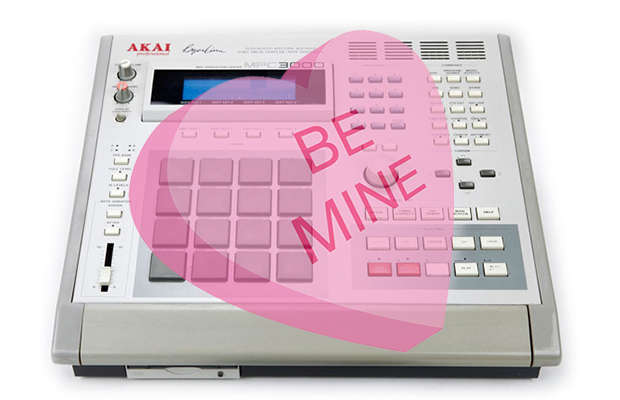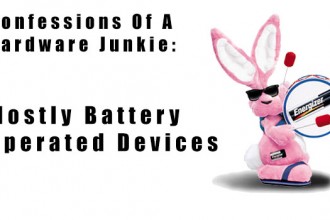Somebody once told me that girlfriends are like synthesizers – it’s always possible to get a new one. Having evolved a bit since the scared little boy and shell-of-man I once was, I found this phrase hysterically funny. There is still truth in it, simply because no human being is capable of 100% error, and like every other guy, I had the potential to grow through and transcend a “bro’s-before-ho’s” stage in my own development on an interpersonal line. Miraculously, I did manage to manifest this potential, and to rephrase the previous statement. The guy I am today would say, “Relationships are like synthesizers, it’s always possible to get a new one… But like synthesizers, the vintage ones are worth more.” So rather than discuss my possibly extensive inventory of former lovers whom I have had the pleasure of knowing (and subsequently losing track of), I thought it would be more informative for today’s producers and less likely to result in a libel suit if I were to discuss… Music machines. So without further ado, my first true love: the Akai MPC-3000.
KNOWN
It’s 1993. I am working as a salesman for the now defunkt Daddy’s Junky Music store on Mass Ave in Boston. I am still listening to lots of King Crimson, but that moment which I described in my prior Lost In Sound opus #1 has come; after 20 years behind acoustic drums, I am going to sell my drumset and buy a drum machine. I already have a drumKat and Akai S-950, but nothing is ever enough for the guy I currently am, and I know there is simply NO way that anyone could actually play beats that are as straight DOPE as those I hear being produced by Pete Rock and DJ Premier.
The head of the keyboards department at Daddy’s was a dude named Andrew who knows more about synthesizers than anyone I have yet known, so obviously I start referring to him as Android. Periodically, he and I hijack the store’s stereo system and stop playing the hair metal in favor of Kraftwerk, which usually lasts a mere ten minutes before future brostep listeners holding guitars with scalloped fretboards confront us to put back on the latest album by Alice in Chains. Thank God for Nine Inch Nails providing a peaceful common ground.
I say to Android: “I am getting into that techno music…”
He replies: “You want to buy a 303…”
I say: “What’s that?”
… And right then and there, my fellow readers, is a whole different story destined for a future date and perhaps worthy for the final edition of Confessions of a Hardware Junkie – Known, Loved, and Lost.
I soon admit to Android that I am nearly obsessed with hip-hop, and that I want to make music that sounds like Tangerine Dream, but if they’d been born in Africa. He tells me about the Akai MPC-60, and that it’s the shiznit for what I want to do. The name Roger Linn begins to take on meaning.
I sell my drumset and make a down payment on the MPC-3000 at another store because at the time Daddy’s did not carry AKAI products. Yes, go figure. Then, it’s back ordered and I have to wait. At the time, I owned a legendary drum machine to be written about later, and it’s just not cutting it because strict 4-on-the-floor was never really my thing, and so instead I am programming it to make breakbeats that would later be used in honor of that one time when what I never knew or loved was lost track of anyway. Finally, the MPC-3000 arrives…
Get this – I spend the time it takes to RTFM, all of it. And then I start sampling… And never having been a DJ, I decide to use cassette tapes of hip-hop records like Schooly D’s Smoke Some Kill and Follow The Leader by Eric B and Rakim. I’m already quite intimate with the aforementioned Akai S-950 so luckily, the process of sampling unfolds quickly, which is great because I have the potential to very impatient. Before I know it, I am programming some dope ass beats because I played drums for 20 years so I could bail on it and do this instead: a true conunDRUM.
Using a single audio output and the track mute buttons to record live while molesting a series of other classic vintage synths to be written about later, I make something like trip hop and little do I know, it is going to become my first vinyl EP, Radical Technology, released on Rising High Records UK by none other than Casper Pound who I was introduced to by Dr. Walker – ½ of German electronic legends Air Liquide. I was to become label mates with the likes of Luke Vibert a.k.a. Wagonchrist and Mixmaster Morris? Yup.
LOVED
What did I love about my MPC-3000, and later 2000XL and even later 1000? That would be like asking me what did I love about all of my prior romances… Except there are going to be more details to protect the not-necessarily-innocent.
-
Ease of Use – The MPC-3000 is 100% idiot proof. I discovered that reading the manual had been merely optional. If drug addicts can make hit records with this thing, then maybe I can rock a warehouse or two, and for bonus points – perhaps become a drug addict in the process.
-
Portability – The MPC-3000 is easy to carry around. I even carried it across the street from my apartment with no road case while on a bender in Cologne Germany, too drunk to walk… But never too drunk to produce music. Similar to Humpty Dumpty, I managed to take a great fall on the sidewalk and cut myself up pretty badly. The MPC, of course, was still in tact as I held it like a I once held a true love. In the immortal words of .38 Special, today I am sure to “Hold On Loosely” but certainly Princess Leia put it more eloquently, “The more you tighten your grip, the more star systems will slip through your fingers…”
-
Step Edit – Micro control over MIDI note on event placement with what today would be considered a stone age UI/UX? More effort than it’s worth? Sounds like Frank’s style – sign me up. What we so effortlessly do today with control/command, C and V or D used to take time and thought. Imagine that.
-
Quantize – Today the ableton groove templates drop bombs all over my world, but back then after a good quantize, I actually used to move snare drums back by a few ticks (see Step Edit above), to make grooves that were “behind the beat.” You really oughta try this – moving the snare drums just a tiny bit later in time than they are supposed to be goes directly to the hips. It’s weird.
-
Timing Correct – This instant drum roll button even transmits after touch (it’s pressure sensitive) FTW. I always had some affection for the conception that this might be seen as “cheating.” Hindsight being 20/20, I can see the lack of wisdom in my prior glee, because in the immortal words of George Clinton, “Free your mind and your ass will follow – the kingdom of heaven is within. Freedom is free from the need to be free.” Different people can do different things for different reasons. Different strokes for different folks, dig? The more preoccupied I was with what others might think about it, the less I was free to be the real me.
-
Indestructible – This is a true story. There is an Electro Bunker Open Air party for the Liquid Sky Cologne crew and several thousand of our closest friends. Air Liquide is performing live. We are rivaling P-Funk All Stars because the entire posse is onstage at the same time having as much, if not more, fun than the crowd. Somebody pops the cork and… Yup the champagne spills ALL OVER the MPC in the middle of a LIVE PA. Yes, the performers are ON STAGE and… Not only does the electricity continue providing current, but the MPC-3000 continues running without missing a beat, and still works the next day! Now THAT is a test that all gear whose destiny it is to live a nouveau rock-n-roll lifestyle should be subjected to during Q&A.
-
16 Levels – This function is so simple, allowing the user to trigger a sample at sixteen different levels of pitch, velocity, or filter cutoff. Using the pitch setting can free the user’s mind from a more traditional keyboard interface way of thinking – follow your ears, it always nose.
-
Multiple Outputs – For performing live with hardware, the multiple outputs are convenient such that corresponding analog mixer channels can be muted to dynamically adjust the texture and arrangement of your music in real time, meaning that you do not have to program as many patterns ahead of time, and more importantly are actually able to improvise.
LOST
So how did I lose my MPC-3000? That beautiful machine was my lover until shortly after tube (one of the myriad musical monikers I carried in the days of yesteryear) completed the To The Planets Edge Tour with The Sisters of Mercy in 1999. Selling this machine was the reason why I opened an ebay account. The 2000XL had come out with more memory, other features I was interested in, and I had not yet started to question our cultural tendency toward ‘improvement’, which sometimes means don’t fix anything, just throw it away and buy a new one. This trend has even been applied to the remaining parts of any connection to our fellow humans that have not yet commodified. People will pay for a perceived solution to loneliness, especially when the inherent temporary nature and impermanence of this is subconscious. It may sound like I am on the fence between old fashioned vs. progressive but the fact is that like the spoon, there is no fence; balance is there for the practice.
STAY TUNED FOR FUTURE EDITIONS
I have made love to (and with) many machines including the following: BOSS SP-202, Zoom SampleTrak ST-224, ARP 2600, ARP Sequencer, ARP Odyssey, TR-909, Minimoog, Moog Taurus II Pedals, Micromoog, Oberheim OB-X, Roland SVC-350, Korg DVP-1, Chroma Polaris, Rhodes Chroma, Roland TB-303, Akai S3000XL (SCSI/MIDI SYSEX PropellerHead ReCycle dumps – for a modern ableton user, never having had this experience is kind of like never having masturbated before you lose your virginity). Stay tuned.





